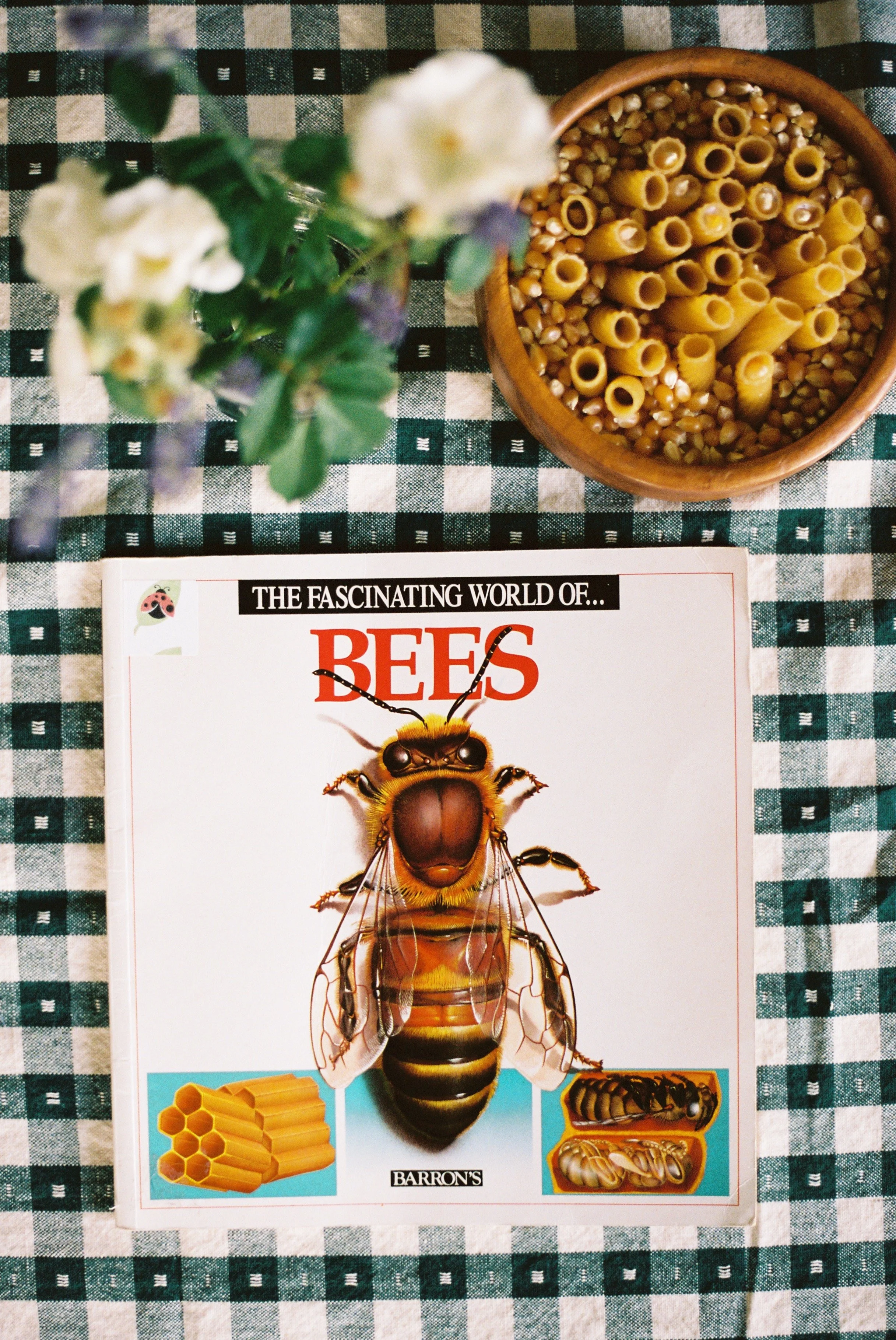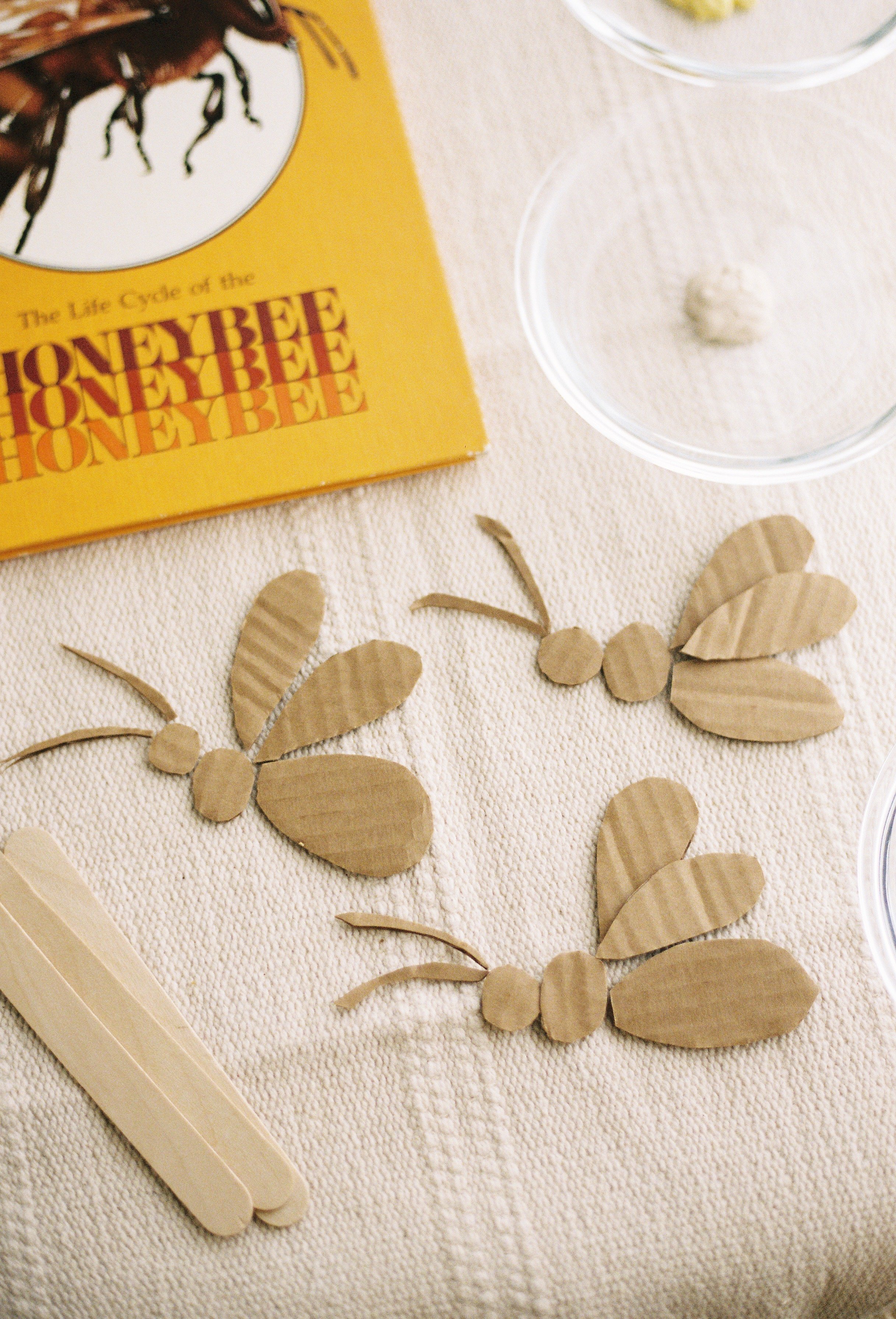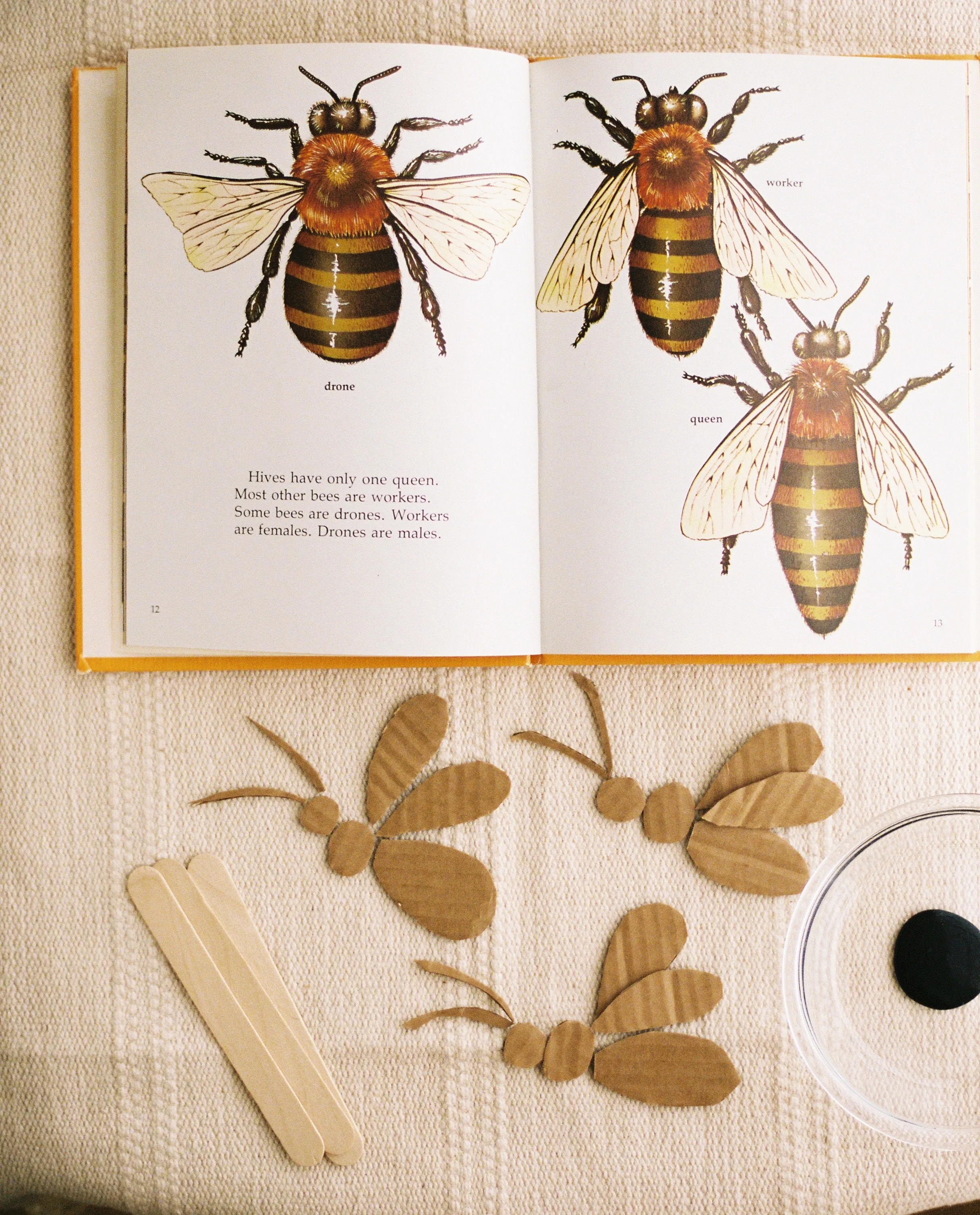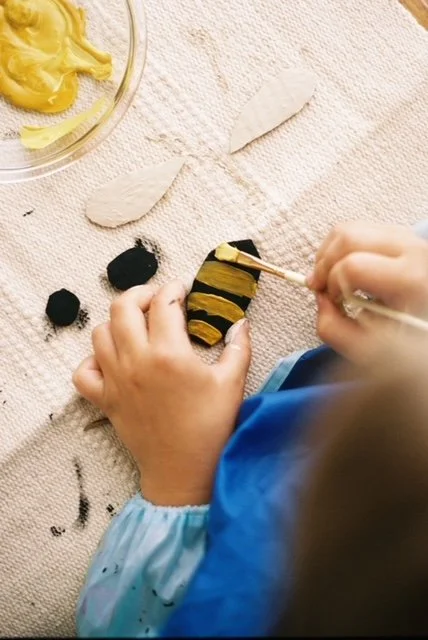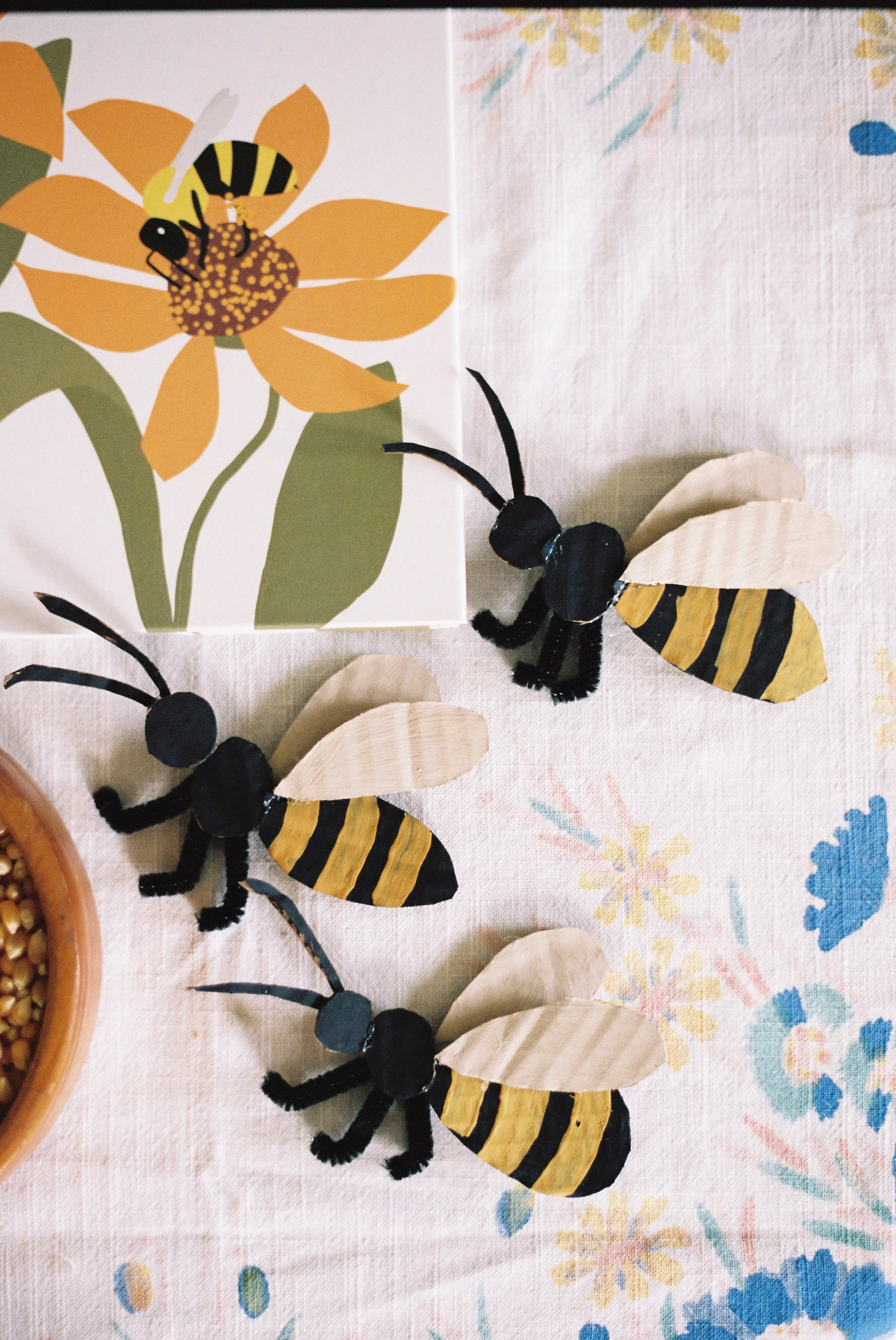
Children learn about the different roles of honeybees and create a variety of different honeybees.
What do bees do?
LESSON 4
The book “The Life Cycle of the Honeybee,” by Paula Z. Hogan
or “Are you a Bee?” by Judy Allens and Tudor Humphries (read aloud linked here)
The book “Bee’s,” (this is an optional book geared toward ages 5+ that goes into more depth about honeybees and their roles in the colony)
Supplies for cardboard bees:
Acrylic paints- black, yellow, cream
Cardboard scraps
Scissors
Black pipe cleaners
Hot glue gun (preferable) or Elmer’s glue
Other craft bee options:
Paint rocks to look like bees
Needle felt bees
Materials
Gather materials for activity
Cut out the cardboard body parts for the different types of bees. Search for images or reference pictures from the book of queen bees, worker bees, and drone bees. Then sketch them on the cardboard and cut them out to represent each type of bee. The queen bee is larger with a stinger, the worker bee is smaller with a stinger, and the drone's body is a bit rounder with no stinger.
Read or listen to the stories beforehand
Preparations
Promote curiosity and interest in bees
Model how to construct a bee
Deepen children's understanding through thoughtful questions
Foster communication skills by encouraging child to discuss their experience
Provide opportunities for children to ask questions
Facilitate a safe and positive learning environment
Objectives for Teachers
Children become curious about the different roles of honeybees
Children compare and contrast honey bee roles to human roles
Children compare the different types of honeybees in a colony
Children use their creativity to create honey bees
Children practice fine motor skills through painting
Children practice parts of a bee by assembling bees
Objectives for Children

Collect and Connect
Do a mindfulness activity together. Here are some ideas!
Create actions for the fingerplay “Five little bees.”
Five Little Bees
One little bee flew and flew
He met a friend and that made two
Two little bees as busy as can be
Along came another and that made three
Three little bees wanted one more
Found one soon and that made four
Four little bees going to the hive
Saw their little sister and that made five
Five little bees working every hour
Buzz away bees and find another flower

Activity Flow
Begin by asking your child what kind of job or career they would like to do when they grow up. Then talk about what you do, perhaps you are a working mom/dad or a stay at home mom/dad, discuss what jobs you do with your child. Then talk about other caregivers in your child’s life and their roles. Mom’s, dad’s, grandma’s, grandpa’s, community workers and the certain jobs these people do to keep us safe, warm, and fed.
Tell your child that you are going to read a book about bees, and just like us, the bees that live in a colony have different jobs that help keep all the bees safe, warm, and fed. Read or listen to your story of choice, stopping on each page to point out the different roles of each bee.
After reading the story, tell your child that you are going to make some bees for the hive you made in the previous lesson. Ask them what bees they remember learning about in the story. There are three main types of bees: the queen bee, the worker bee, and the drones. It may be helpful to look up a picture of each type of bee so they can see the physical difference as well. You can see this on page - of “The Life Cycle of a Honeybee,” book.
Queen Bee: The queen bee is the largest bee in the colony and her job is to lay eggs. She is the mother of all the bees in the hive and can lay up to 2,000 eggs a day.
Worker Bee: The worker bees are all female and they have many different jobs. Some worker bees clean the hive, others feed the babies, and others go out to collect nectar and pollen from flowers.
Drones: The drones are the male bees in the colony. They don’t have stingers and do not collect nectar or pollen. Their only job is to mate with a queen bee from another colony.
4. Take the cardboard pieces (or other craft materials if you chose to do a different type of bee) and paint the bees body parts, then work with your child to assemble the bees and glue them together. If you are using hot glue, make a plan to keep everyone safe. Lastly, attach the black pipe cleaner legs to your honey bees. Hold onto your bees until the next lesson, where they will put all their knowledge to action through a fun play-based activity.
